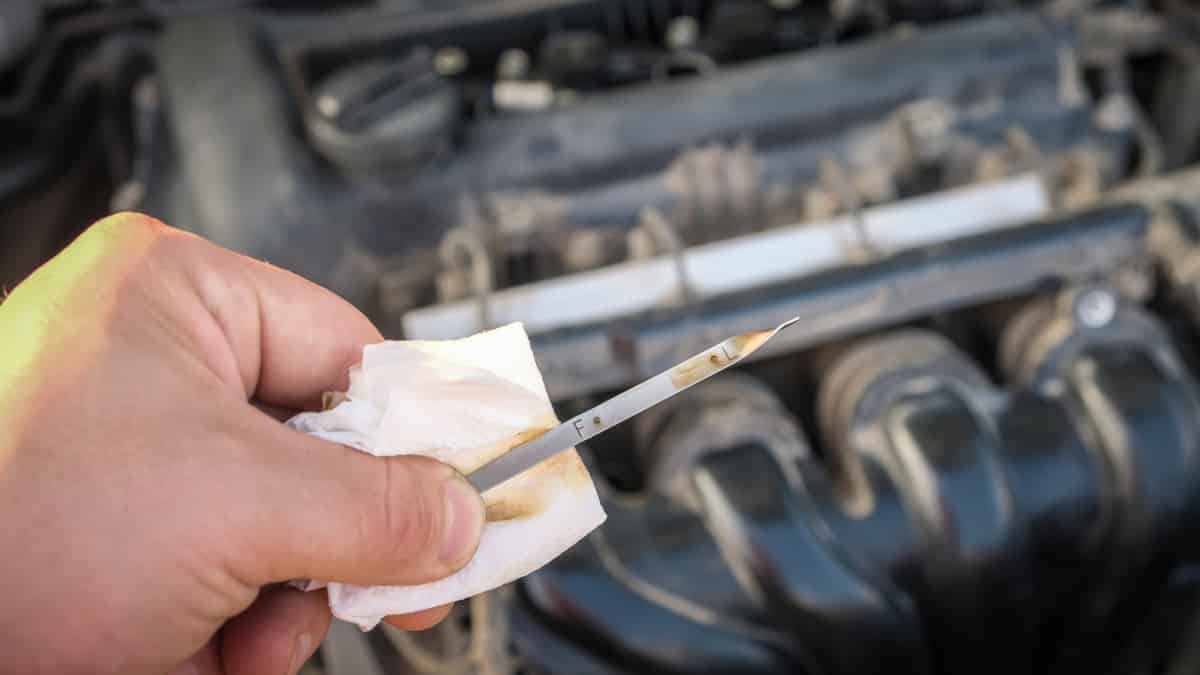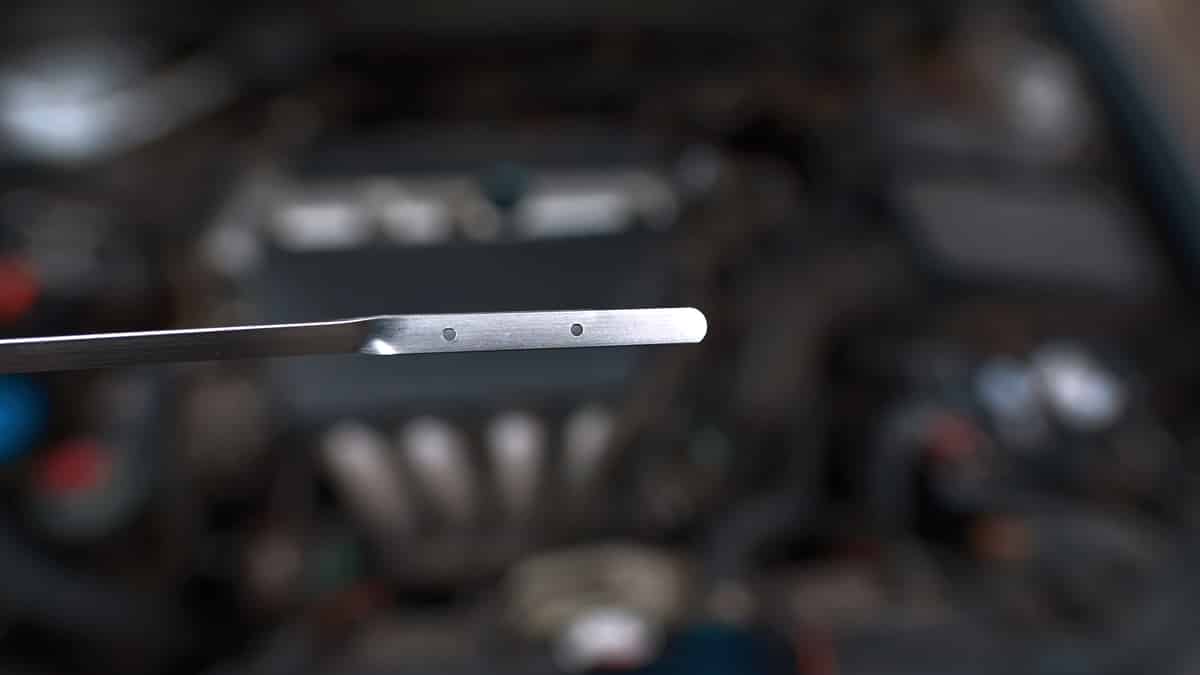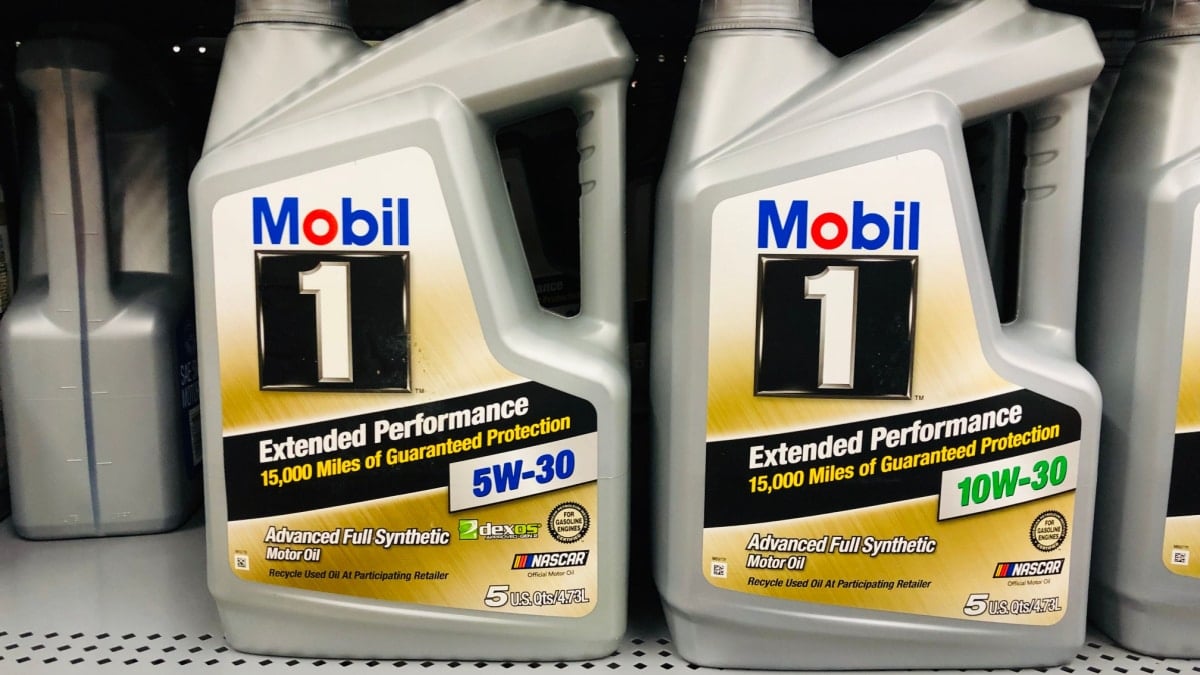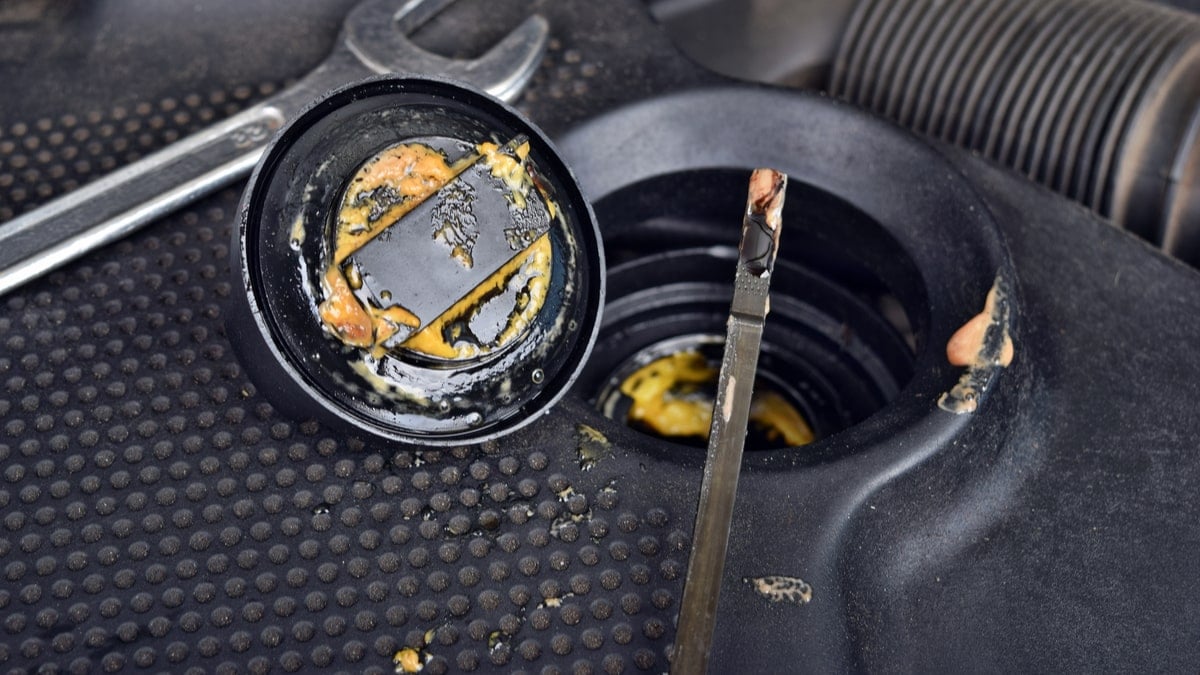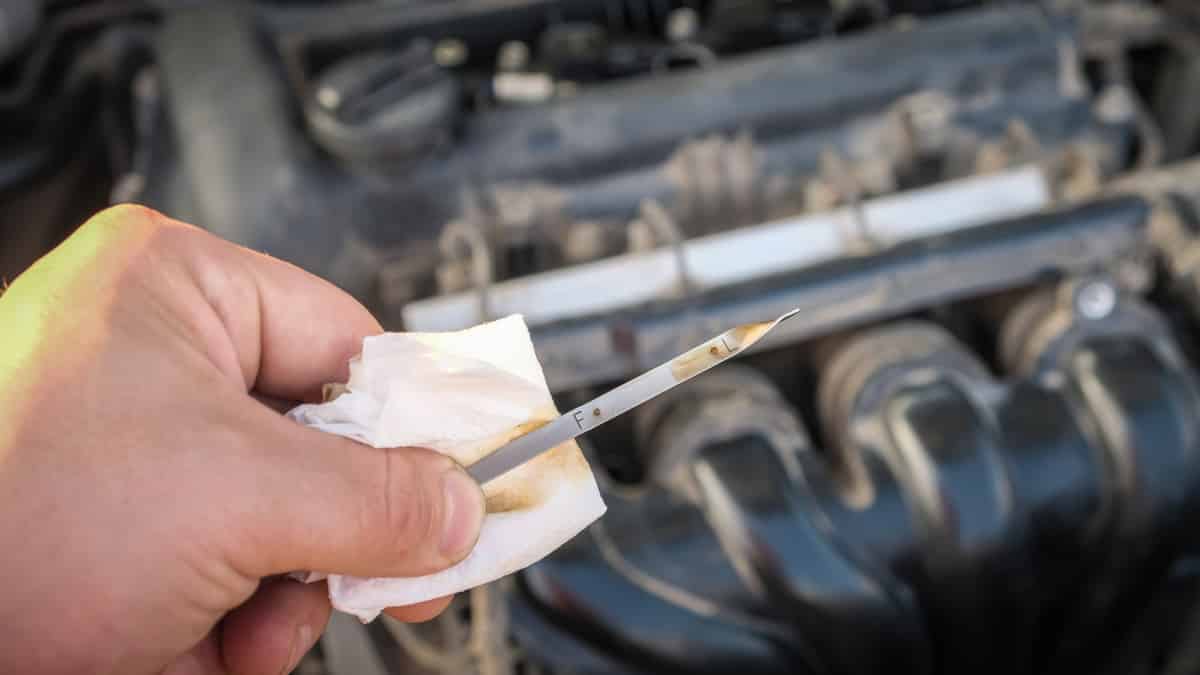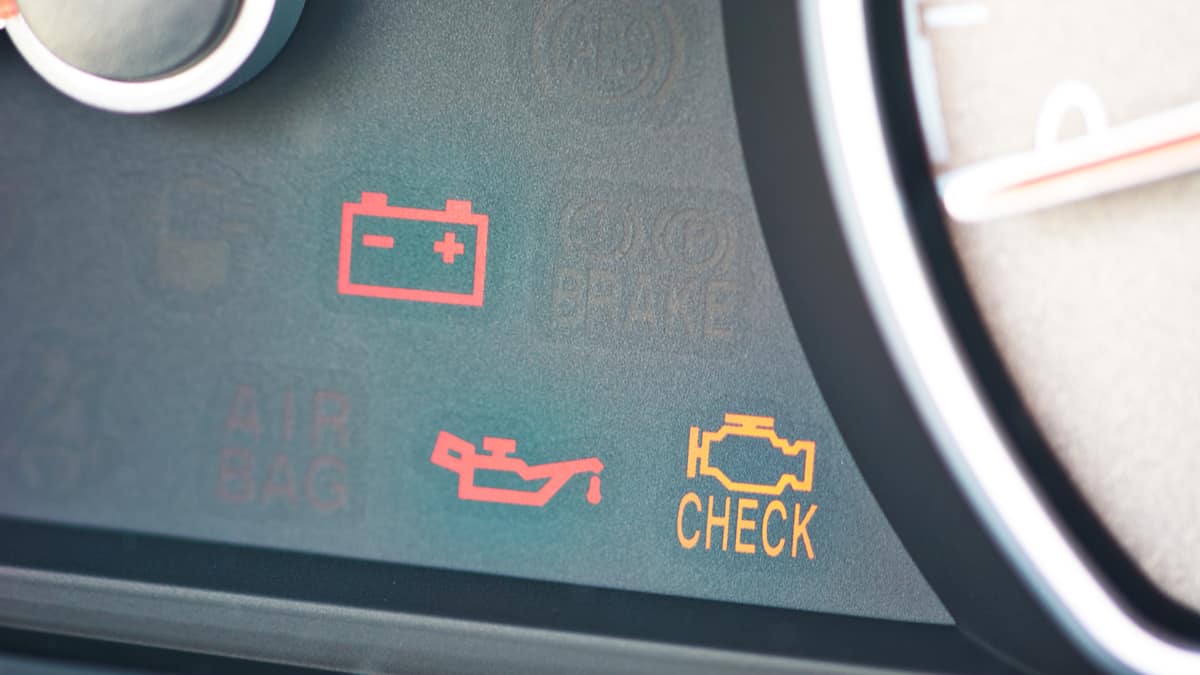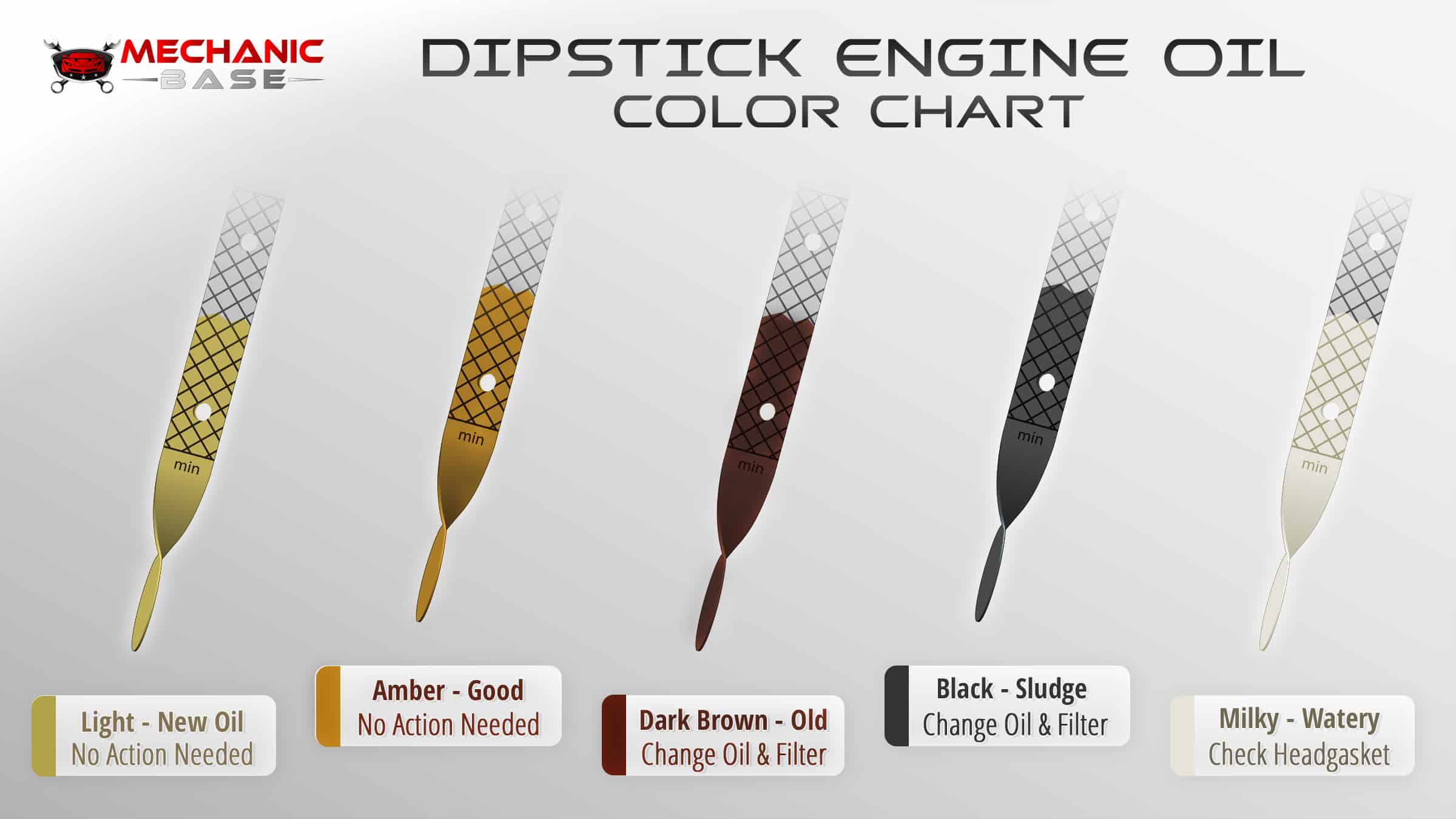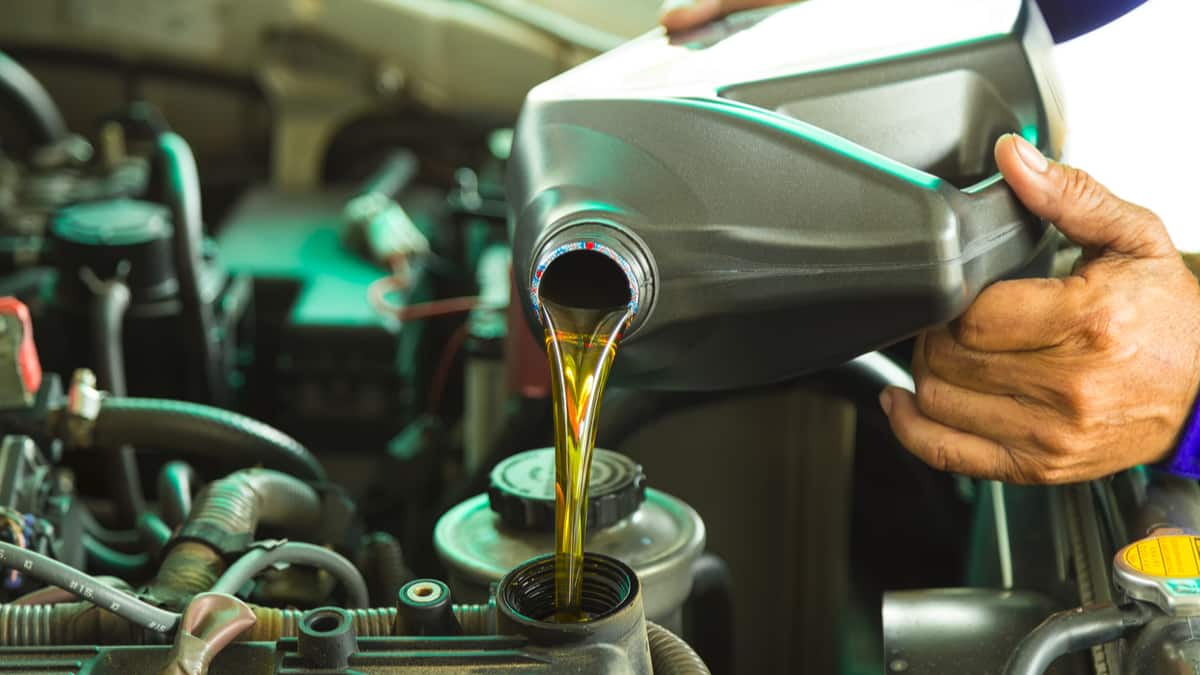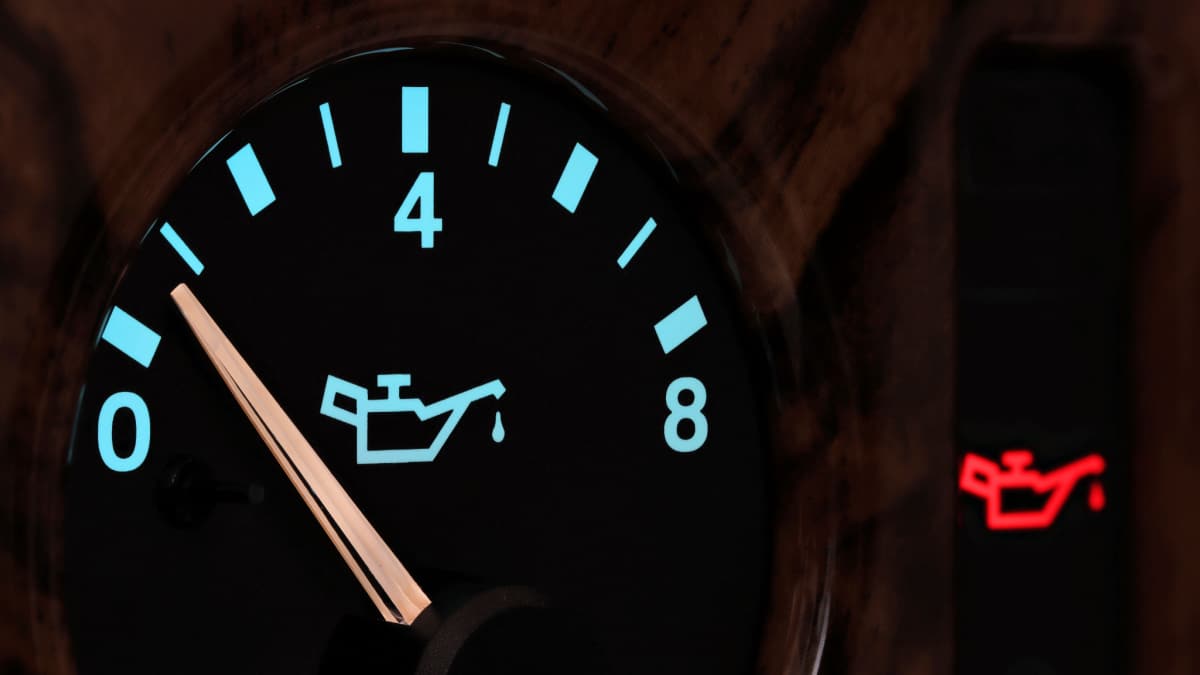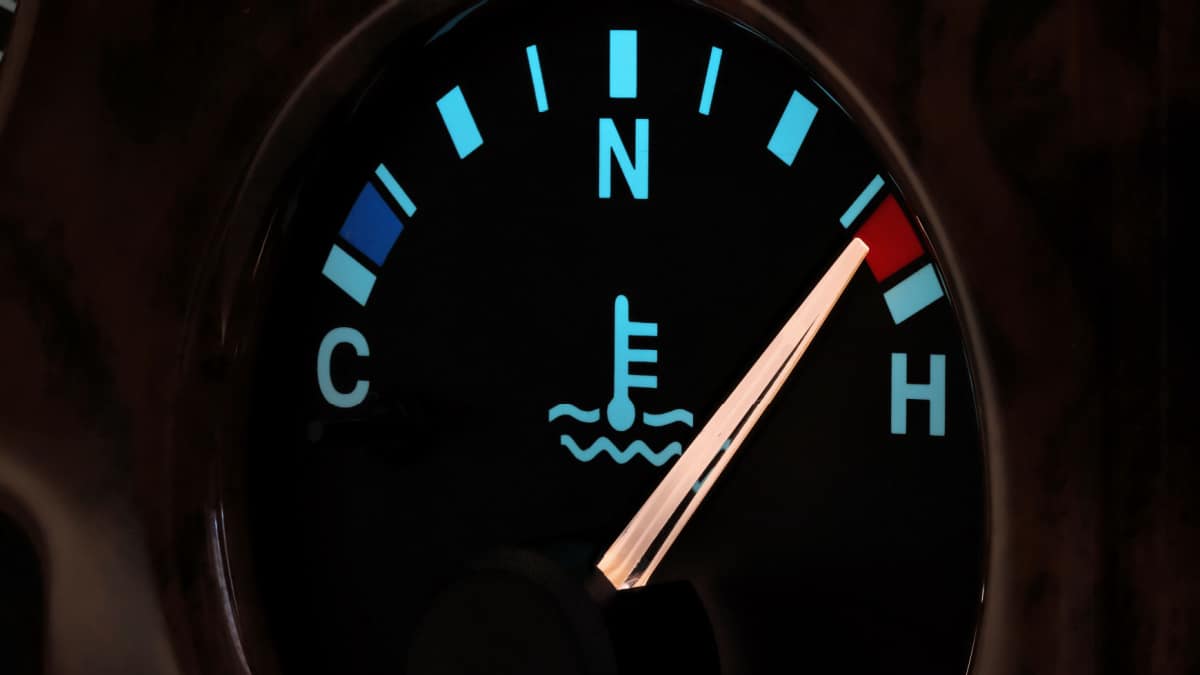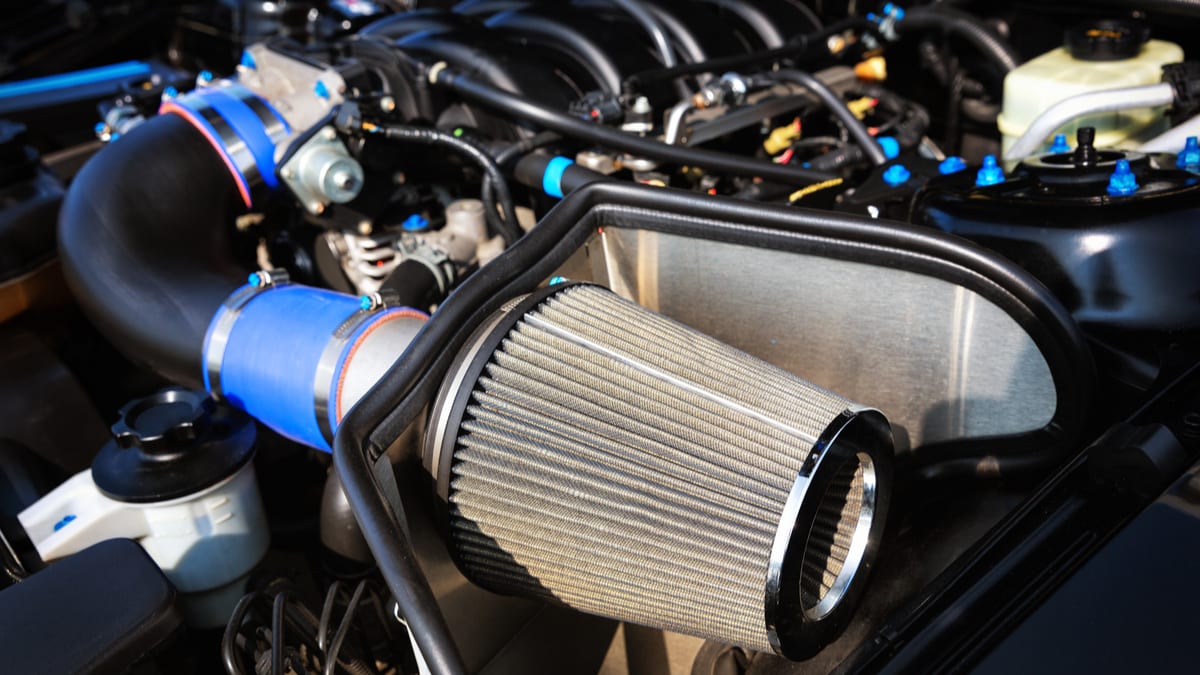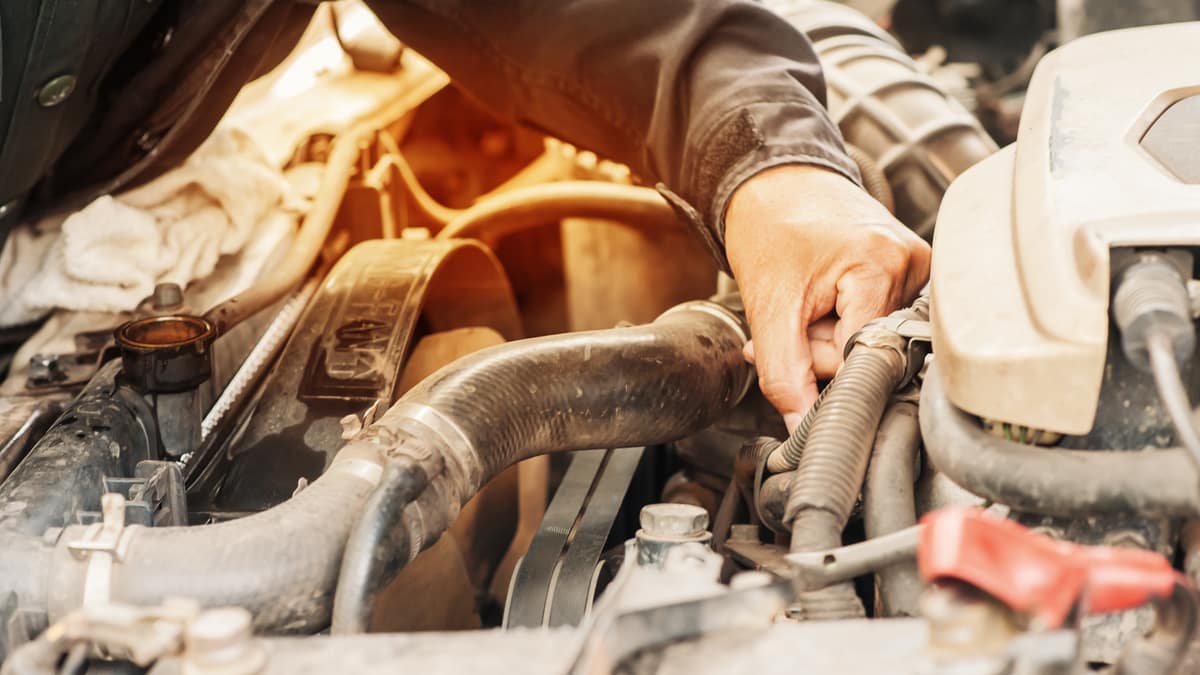Of all of the basic maintenance procedures you should know how to do, being able to check your car’s oil levels is one of the most important. If you don’t have a lot of experience checking oil, you may wonder about the best practices. Of these, the most common question is whether to check oil when the engine is hot or cold.
In this guide, we give you the answer to this vital question. We also look at the various oil types and if they matter. Beyond that, we give you the steps to check the engine oil levels so you know if it’s time to top off. You’ll see just how simple it is to perform this maintenance task at home without any special tools. Before you leave, make sure you check the answers to the most commonly asked questions.
Should You Check The Engine Oil Level Hot Or Cold?
For most users, it’s best to check the engine oil levels while it’s cold. If you prefer to check it when it’s warm, you want to wait for a minimum of 15 minutes after the engine was last run. That’s about the time it takes for the oil to come down into the pan fully.
For optimal safety, you want to wait until oil temperatures have returned to normal. That’s because the oil temperature can easily reach 250 degrees Fahrenheit.
With that said, new cars that have electronic oil level controllers only allow for a proper measurement when the oil is warm. The car must also be parked on a flat and level surface. For this reason, today’s manufacturers recommend more and more that drivers check the engine oil when it’s warm. It seems to provide a more accurate result. Just don’t read the engine oil directly when it’s hot.
In our opinion, the important part isn’t whether the oil is hot or cold when you check the oil, but rather that you give the oil time to drain back into the oil pan after the car has run. The oil must have drained back into the oil pan in order for you to get an accurate reading.
Does Oil Type Matter?
You have a big decision to make when performing an oil change. Conventional oil is cheaper, but it also doesn’t hold up as well over time. Synthetic oil, on the other hand, is going to provide the best amount of lubrication, but that improved performance comes at a cost. So, what do these types of oil have to do with when you should check levels?
Oil types have varying expansion and contraction rates based on temperature. For example, synthetic oil has the highest expansion and contraction rate with temperature fluctuations. When cold, the synthetic oil will contract more, and when it is hot, it expands significantly.
With regular conventional oil, the expansion and contraction tend to remain the same under all temperature situations. For the most part, you should see the same reading whether it is hot or cold.
No matter what oil type you choose, it’s important that the level is between the recommended lines on the dipstick. If you need to top off the engine, use the same type of oil that’s already in the system. Don’t mix different types of oils, such as synthetic and conventional, unless absolutely necessary.
RELATED: What Type of Oil Does My Car Need?
How To Check Your Engine Oil Accurately
If you are ready to check your engine oil levels, you don’t need to have a lot of expertise. We suggest that you first read your car owner’s manual to see if there are any manufacturer specifications that must be followed. Beyond that, these general guidelines should help.
1. Drive Car For 10 Minutes

If you have a newer vehicle, you should take the car for a short drive. You don’t need to get it up to highway speeds or do anything substantial. In fact, a short ten-minute drive should be more than enough. You just want to get the oil circulating in the system.
If you prefer to err on the side of safety and you drive an older vehicle, there’s no reason to take the car for a drive. You can pick up the instructions at step 3 and check the oil while it is cold.
2. Let The Car Sit For 15 Minutes
You don’t want to check the oil as soon as you stop driving. Instead, it’s important that you allow the oil time to cool off slightly until it’s just warm.
This process shouldn’t take much longer than 15 minutes if you only take a short drive. Set a timer so you don’t forget to check it at the appropriate time. Additionally, you want to leave the engine off while you check the oil.
3. Park On A Flat Surface
To get an accurate oil level, you need the car to be as flat as possible. Find a level spot in your driveway and park here.
If you don’t have a level spot, you may need to take the car somewhere else to check the oil. Otherwise, all of the oil will move to the back or front of the engine, depending on where the elevation is.
RELATED: How to Check Your Car’s Engine Oil (Read The Dipstick)
4. Find the Dipstick
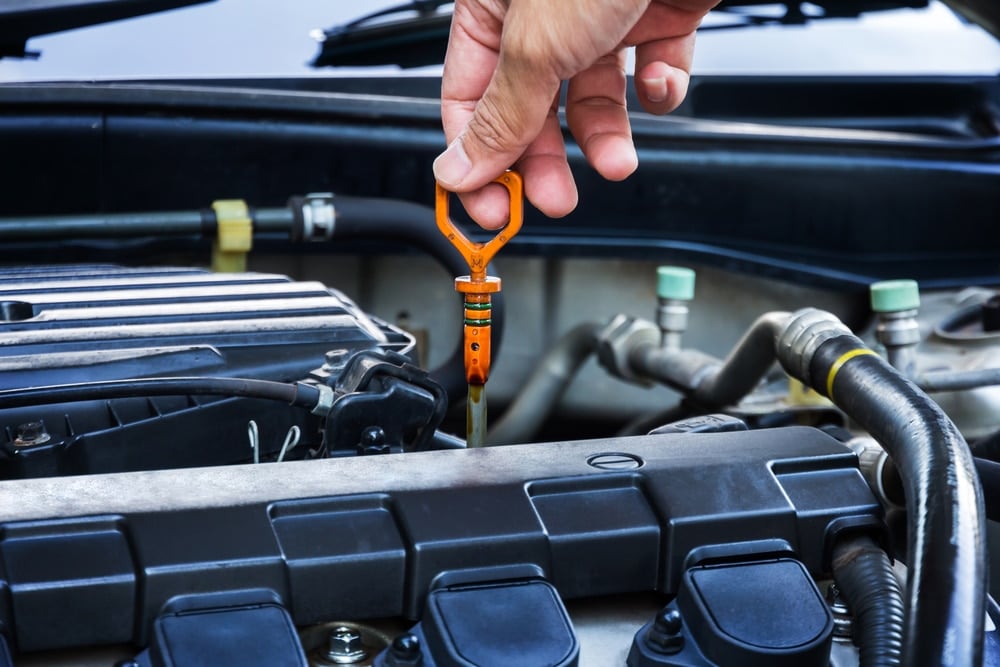
Pop the hood to gain access to the engine. The oil dipstick will be clearly marked, normally with an orange or yellow circular handle.
You’ll know you have the right dipstick if it comes out as a long metal piece. When it slides out of the engine, the liquid color should be amber-brown to darker black. If your dipstick looks different or the fluid color is different, you may want to verify that you’ve chosen the right one. Your owner’s manual should provide more information.
5. Remove the Dipstick
Now that you know where the oil dipstick is, you are ready to pull it out. It should slide easily out of the tube without much resistance.
Have a shop towel ready because you will need to clean it up. Wipe down the dipstick and put it back in the tube.
6. Return the Dipstick
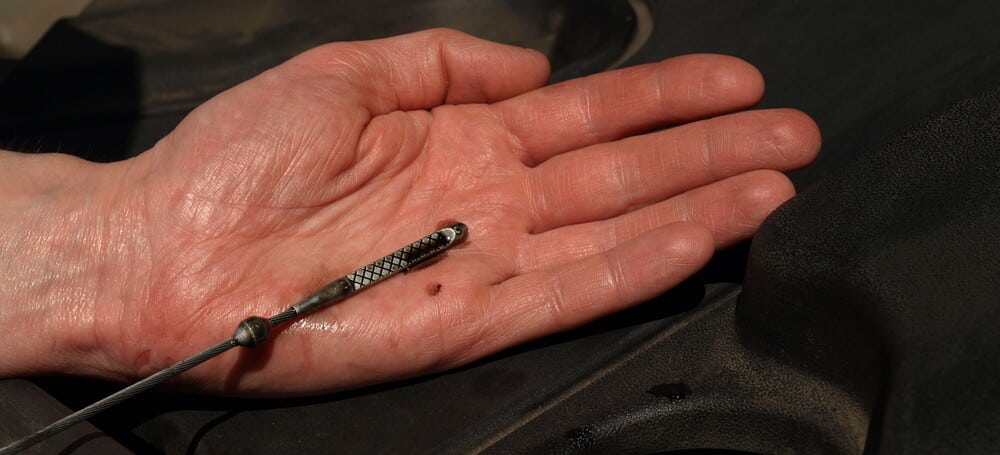
Once the dipstick has been reinserted, you need to remove it once more. Take a look at the oil dipstick to see where the oil level is. If the oil is fresh, the liquid will be an amber color. Otherwise, if the oil is old, it could be dark brown or black. Most cars have a line that shows you when it’s empty and full. Ideally, your oil level will be located between these lines.
With this information in hand, you are ready to fill up the oil if it’s too low. If it’s time for an oil change, you may prefer to hold off on the top off and go forward with the regular maintenance instead. For best results, don’t forget to replace the engine oil filter at the same time that you change the fluid.
RELATED: What Color Should Your Car Oil Be? (Dipstick Engine Oil Color Chart)
What Temperature Should You Check The Oil At?
Back in the day, everyone checked the oil level when the engine was cold. This was determined to be the safest method of checking fluid levels. These days, modern cars are meant to be checked with warm oil, 5 to 10 minutes after the engine was last run. For this reason, it might be better to run the engine for a short time and let it cool off before seeing where the oil is on the dipstick.
Is It Ok To Check Oil When Engine Is Hot?
There’s never a reason to check oil levels when the engine is hot. Motor oil can be extremely hot, so checking it would only put you at risk for a burn. Instead, you can run the engine for 10 minutes and let it cool off for 15 minutes before checking the oil levels.
Does Oil Level Go Down When Cold?
The oil level shouldn’t differ much from when it’s warm or cold. However, most modern cars recommend checking the engine oil when it’s slightly warmed up. Inspection at this time seems to bring the most accurate results. Check the owner’s manual for your vehicle to see what’s recommended.
How Long Does A Car Have To Sit Before You Check The Oil?
In older vehicles, you can check the oil when the engine is completely cold. You don’t need to run the engine at all. In fact, this used to be the recommended practice for safety purposes. Today’s modern cars have some different guidelines, suggesting that you run the car for ten minutes and let it sit for another 15 before checking the oil. This procedure allows the oil to be warm, but not so hot that it’s dangerous.
Does Oil Level Go Down When Hot?
When you warm up the engine, you allow the oil to circulate through the motor. To get it to settle back into place, you want to allow the engine to cool down, but only slightly. You don’t want the engine to be completely cold, but it can also be dangerous to check the levels while the motor is hot.
For older cars, it is better to check the oil when the engine is cold. This time allows the engine oil to drain fully into the pan for an accurate reading. However, newer guidance suggests that the latest models should be lightly driven and cooled down, so the oil can be checked when the engine is warm.
It’s not always easy discerning the best practices for your vehicle, which is why we always recommend checking with the manufacturer. What’s most important is that you are checking the oil levels regularly and that you are performing all of the necessary maintenance.
Learning how to check the oil can save you from disastrous consequences down the road. You don’t need any mechanical experience to perform this simple procedure. Follow the steps outlined above and take steps to ensure reliable transportation for years into the future.
Sources:
Categories: Engine Oil, Maintenance
